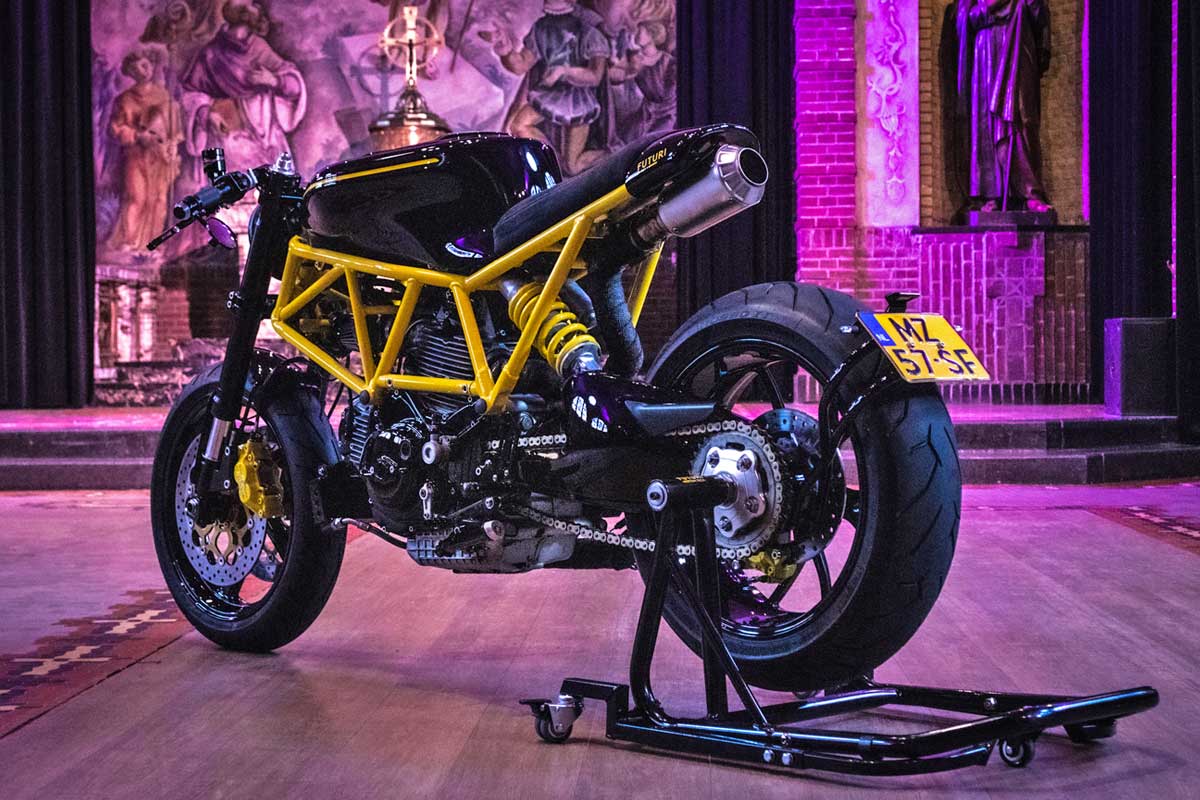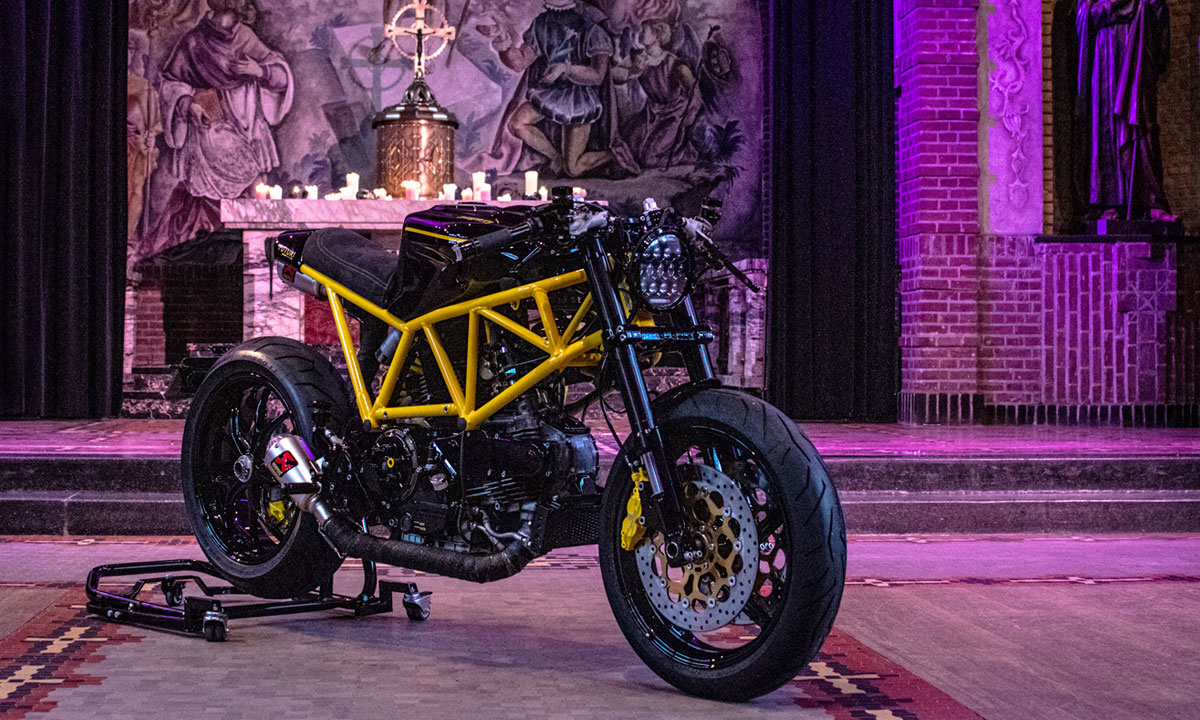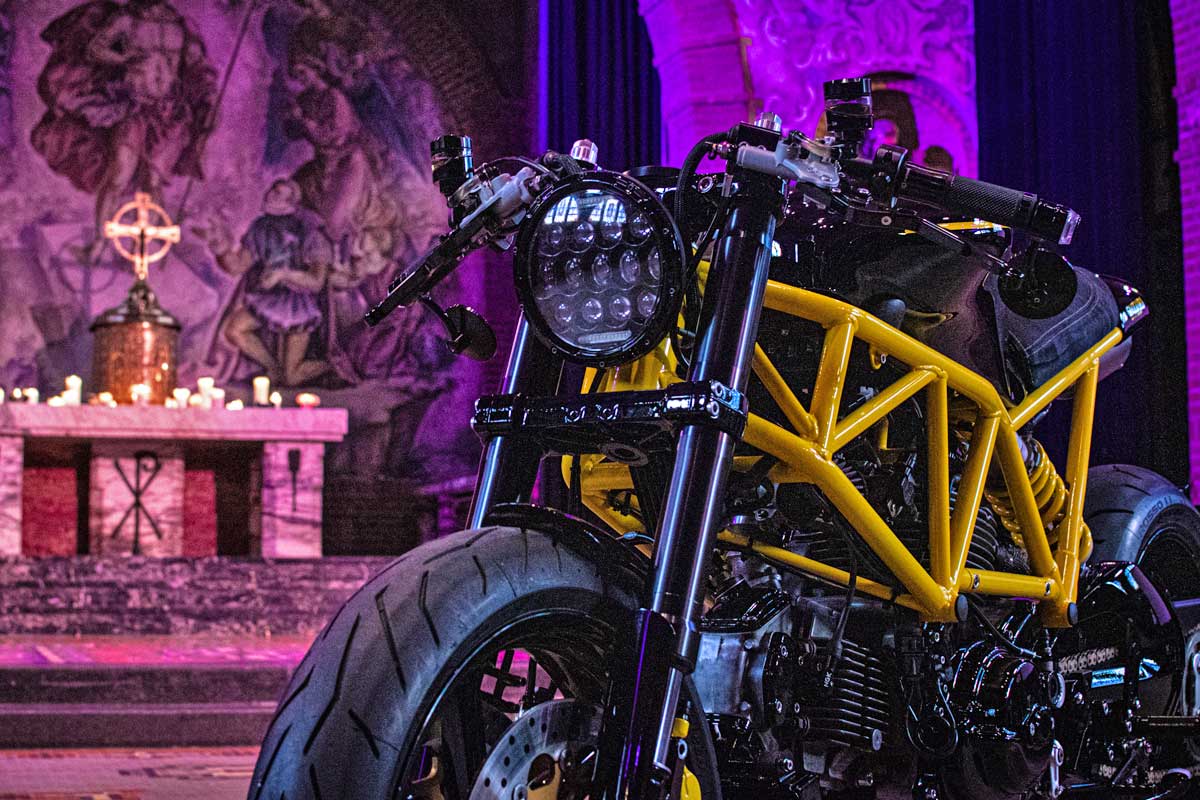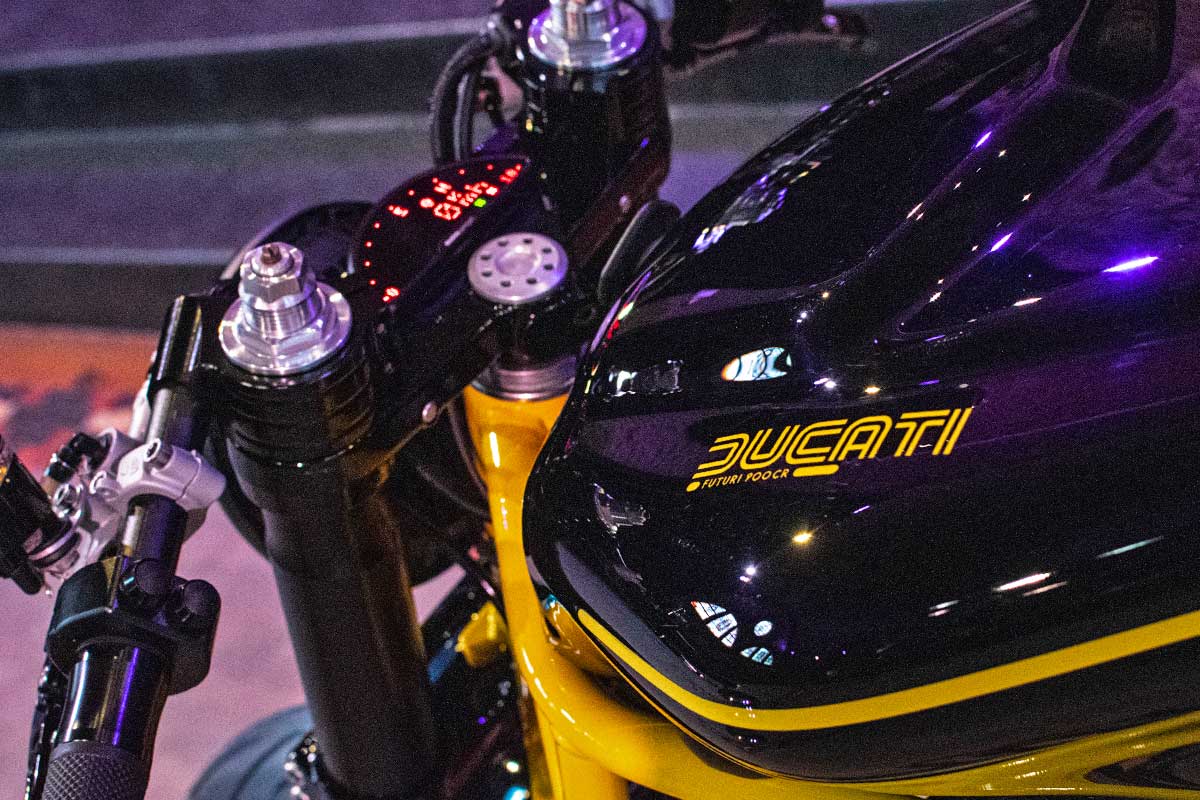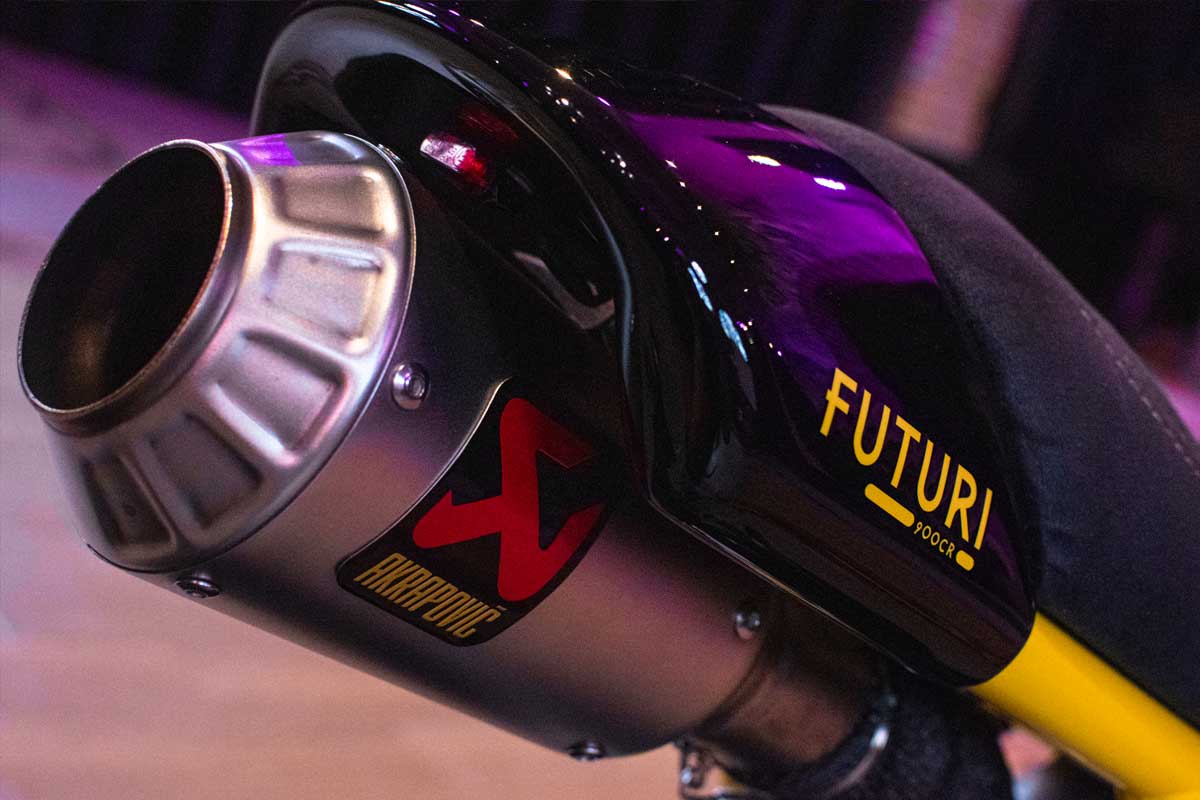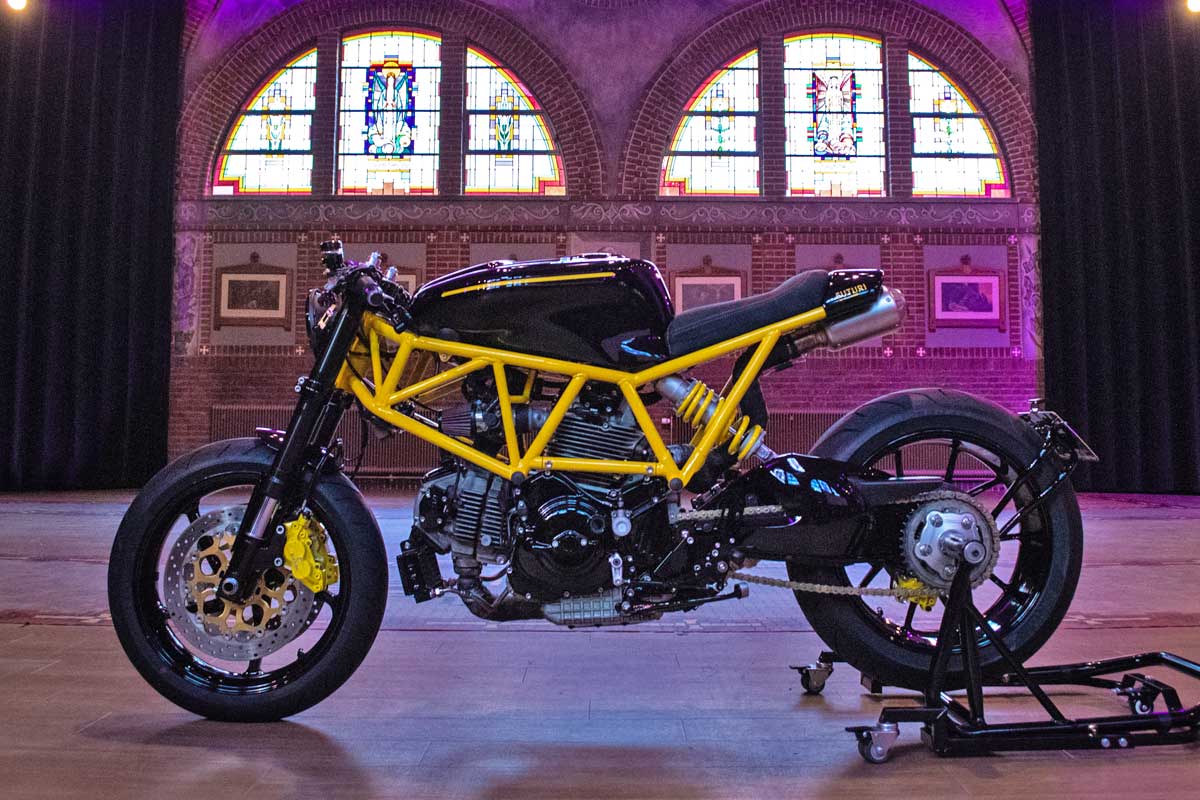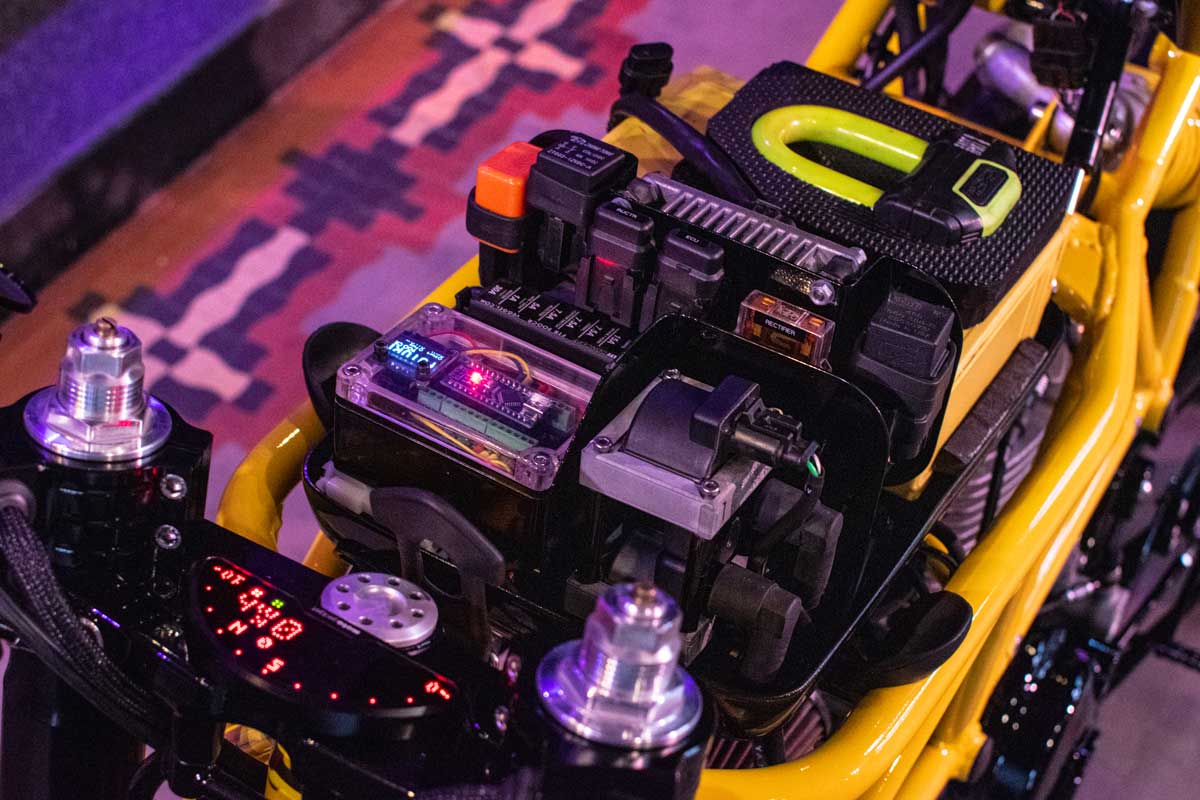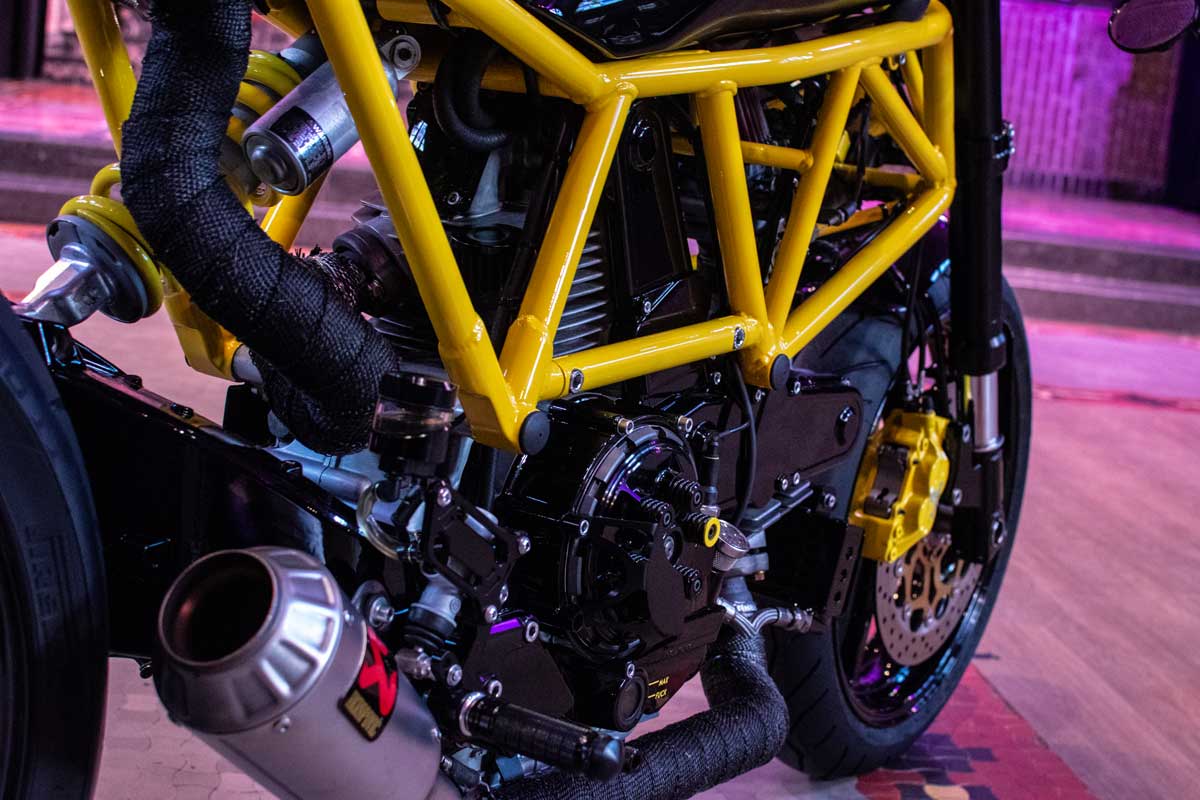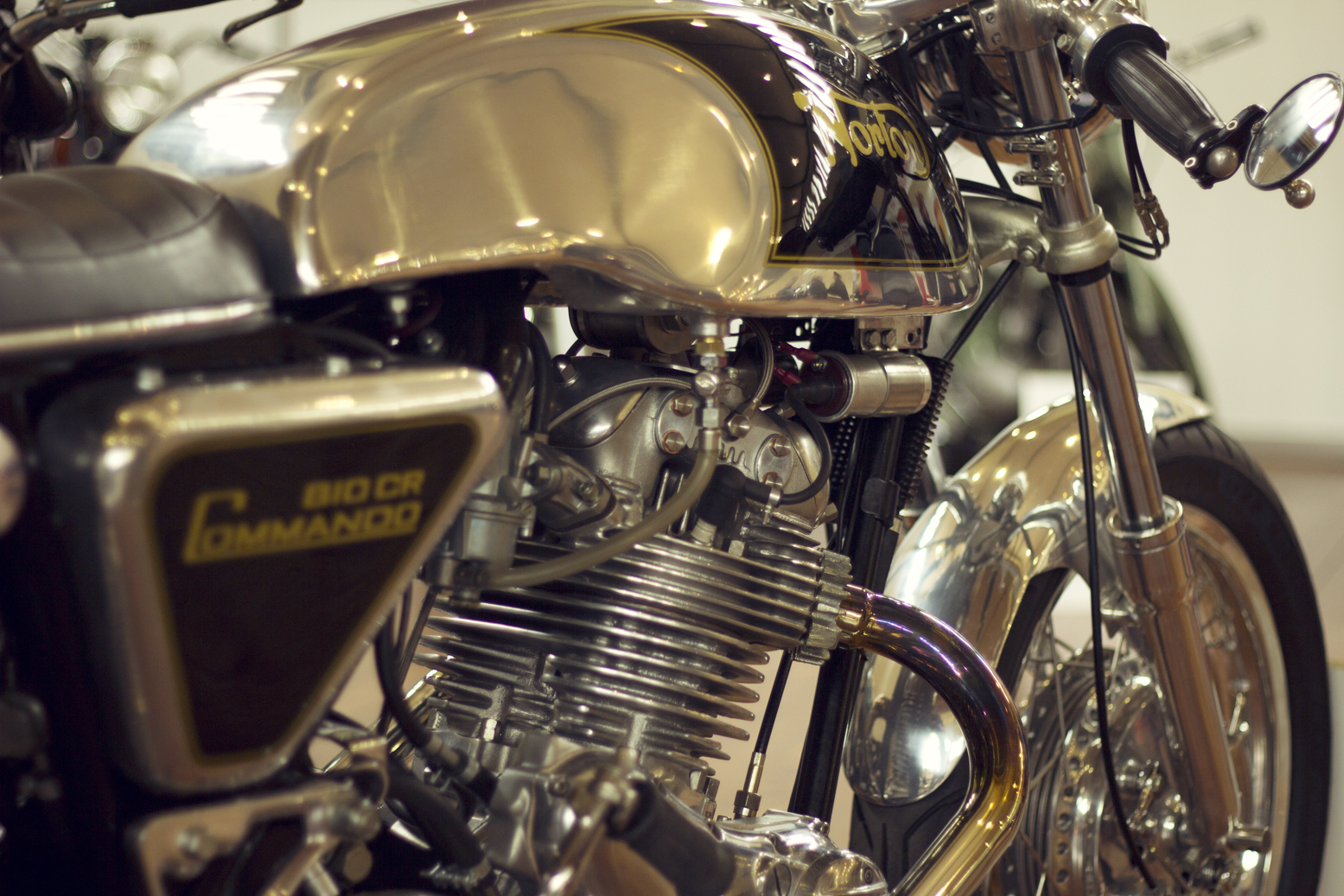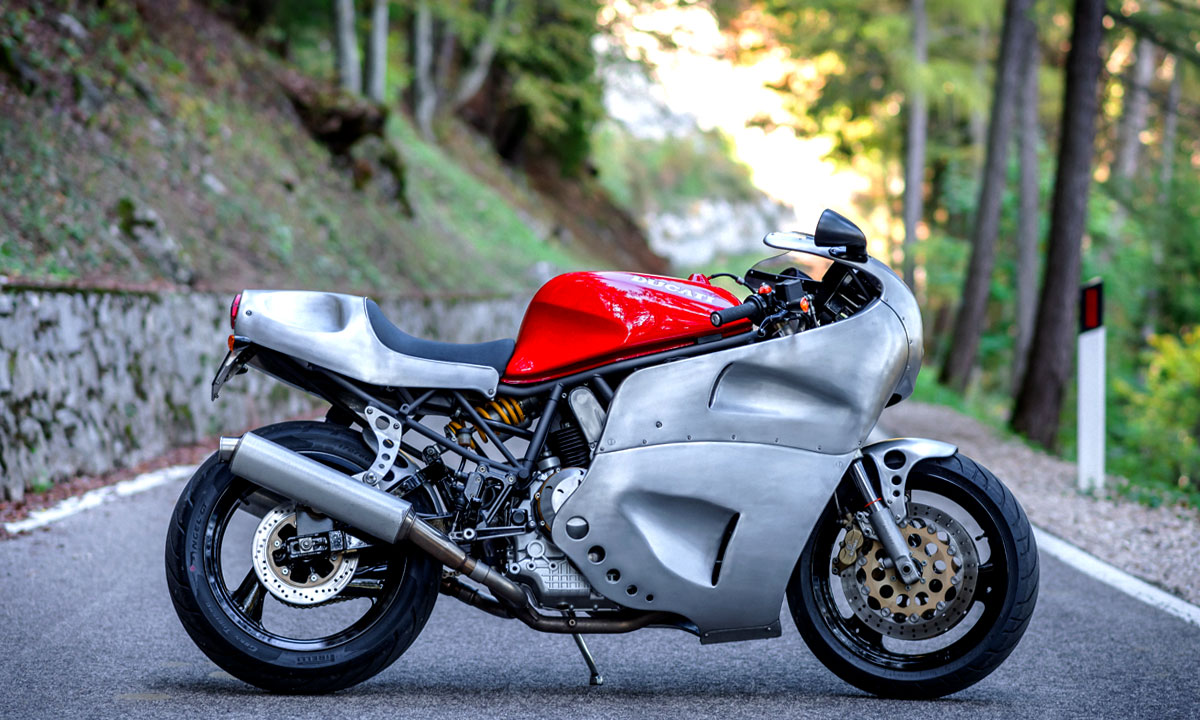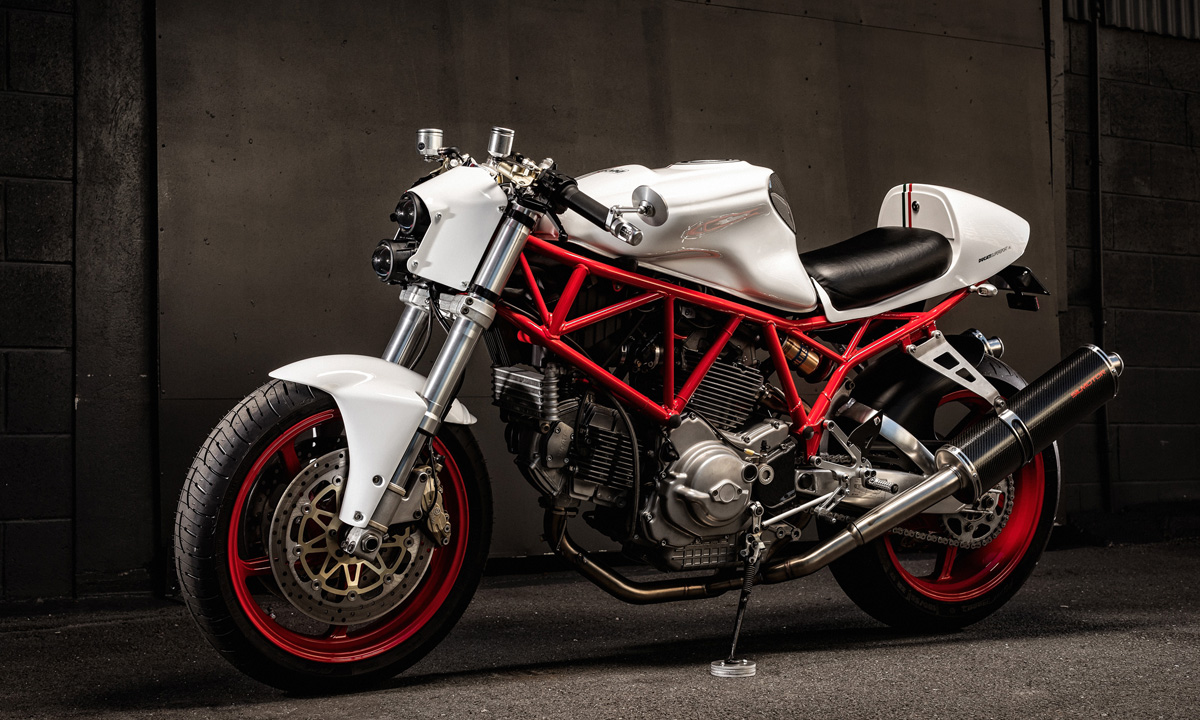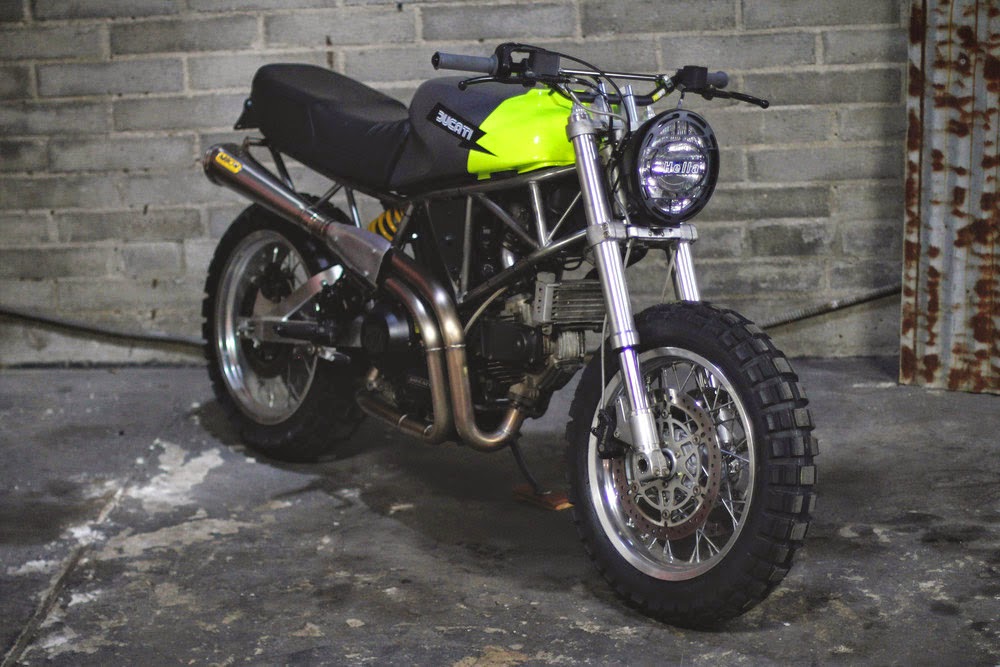They say imitation is the greatest form of flattery. In the commercial world, not so much. But when it comes to regular guys recreating something complicated, it’s all about realising personal goals. Like the New Zealander who built a Ferrari 250 GTO in his chicken shed or the dad who constructed an accurate replica of Disney’s Haunted Mansion for his kids. Mark van Veggel considers himself a regular guy. He’s been in IT his entire working life and is a father to 4-year-old twins. But to find some relief from the stress of his high-pressure job he decided to build a custom motorcycle from scratch. He found his inspiration in NCT motorcycles ‘Predator’ 750SS and he calls his bike the ‘Futuri’ Ducati 900SS Cafe Racer.
“One night I was feeling a bit burned out by my IT job,” says Mark. “Sitting on the couch scrolling Facebook Marketplace I came across a not so amazing 1999 Ducati 900SS. It was tucked away in the middle of nowhere and the price (1500 euros) was right. So I thought I’d go for it.
My workshop is just a wooden shed in my garden that’s 3m x 3m. Let’s just say space is a challenge, especially when you want to fit two motorcycles in there together along with all your tools and other projects. I tried to make the space as efficient as possible; mounting things on the ceiling and walls. I now have almost all the stuff I need. For tools I don’t have, like a lathe, I use a nearby car shop that belongs to a friend of mine.”
“The bike was clearly inspired by the NCT Predator prototype 750SS. It’s not an exact replica but is heavily influenced and features some of my own design and technical choices. The primary focus was to make it clean and simple. There are almost no visible wires or cables. The lines of the bike don’t follow the cafe racer rulebook, however, almost all the lines complement other aspects of the bike. The whole build was new for me. From welding to the fibreglass work and the engine overhaul. It was a huge learning curve.
I began by performing an engine service. Changing belts, valve clearances, oil, spark plugs the whole lot. It was then time for the first real ride. Everything ran great over the 150km test ride. Next, I moved on to the custom subframe. Cutting the back off the frame was a huge step since it meant there was no turning back. One of the additional challenges with the new subframe was how to mount the proposed single-sided swingarm. My first idea didn’t work out so I ended up notching one of the frame tubes to make enough room for the swingarm.
I wanted the back of the bike to be as clean as possible. There are off-the-shelf mounting solutions available for license plates but they weren’t as neat as I hoped. I also wanted the turn signals next to the license plate. Without a solution readily available I decided to build it myself. I bought the tools to bend steel tubing and got to work. After some trial and error, I achieved a nice result. The custom bracket mounts directly to the swing arm eccentric hub bolts. All the cabling for the lights runs through the tubes.”
“I wanted a completely custom exhaust made of pie cuts. So away I went. I was amazed at how fast you can build the rough shape of the exhaust using pie cuts. However, I seriously underestimated the work required to weld everything up. I topped off my headers with 2 Akrapovic GP style mufflers. The final step was wrapping the exhausts in black exhaust wrap like NCT did with their Predator.
I didn’t like the seating position of the 900SS. My knees were too tucked in and feet up too high. Subsequently I moved the footpegs down and back and created custom mounts for some rearsets. The next step was one I feared the most. Changing the fuel tank.
The Ducati 900SS doesn’t have an appealing tank design in my opinion. However, I saw its potential and started chopping. I used a laser level to draw out how much I needed to remove from the bottom of the tank. After that initial cut, it was looking way better on the bike so I fabricated a new base to close it back up. I then removed the ugly rubber pieces and welded up all of their mounting points. I then fabricated a hinge mechanism and a gas strut to allow access to everything beneath.”
“The installation of the single-sided swingarm meant I had to align the chain and sprockets. I opted for a 525 chain conversion since the 900SS normally is 520. I sourced a custom made CNC front sprocket with a 5mm offset to get everything to work – and it does work great. It’s one of the few things I didn’t build myself, but it was worth it.
I’m an electronics guy. This means I build and design my own electronic circuits. So I purchased a set of cheap indicators from China that had decent housings. I then designed new internal circuit boards and sourced extremely bright orange LEDs. I had new circuit boards made in China and soldered everything up at home. The result is way better and they perform exactly the same as the premium aftermarket units at 1/10th the price.
I wanted something different to the aftermarket bar end mirrors on offer. Using the lathe I created a simple bar end weight with a thin steel bend bar attached. To this bar the mirror attaches and you are able to adjust it for the rider. I finished them with knurled nuts to fix everything in place.
I love the Motogadget stuff and the m-Unit. However, they are pricey and I didn’t need all the features. I decided to build a custom one myself. My device imitates button presses on the handlebars was wired to the original contact points of the buttons. It uses very few wires at the switches. I gave the device the name Motor Control Management, MCM, and it was built using an Arduino. I added an OLED screen so you can see the current function of the device.
Milled reservoirs and a leave the cockpit looking incredibly clean. All the wires through the clip-on bars and have been nylon sleeved. Fitting the headlight and finding just the right position took me about 4 attempts. I created multiple custom brackets to get the right look and settled on one that mounts the headlight to the upper triple tree.”
“Another task I underestimated was building the rear fairing. I wanted it small while still being able to house parts such as the RFID ignition, taillight, seat locking mechanism and the hidden mounting solution for the exhaust muffler. I started by making a mold from insulating boards then coated it with fibreglass and epoxy resin. The big challenge was that this part is a single piece that slides over the subframe. It worked but the outcome was rough, so it had to use filler to get it ready for paint. The seat is handmade too with a fibreglass base and SG120 foam that shapes easily with a grinder wearing a sanding disc. Unfortunately, it makes a real mess. I’m still finding bits of it in the workshop! The upholstery lady did a good job finishing it using Alcantara and yellow stitching. There’s also a custom seat locking mechanism I made on the lathe. A hidden handle under the seat releases it from the subframe. The seat needed to be easily removed since the tank can’t be lifted when it’s installed.
I didn’t want ugly brackets holding the front fender so I created mounting points on the inside of the forks near the calliper mounts for a thin steel bend rod to be mounted to. Fifteen years ago I learned to use Photoshop and Illustrator so creating decals is easy. I made custom Ducati logos, Futuri decals for the tail, a custom frame number sticker that states the dB level as 110, a fuse box sticker and yellow pinstripes for the tank, to name a few.
All the electronics are hidden beneath the tank. I built a fibreglass tray for everything to sit on. Fitting all the electronics and the battery within this tray was a challenge, to say the least. It required a custom wiring loom together with some smart mounting solutions for parts like the ignition coils. Putting ignition coils so close to an ECU is asking for trouble so I constructed a shield that is grounded to make sure all the EFI is minimized to the electronics. After everything was done I had just enough space to store my disc lock beneath the tank.
Cable management has been a thing of mine since I was young. My bike needed a see-through frame with all the wiring out of sight. I installed a lot of tie-wrap saddles at the back of all the frame tubes allowing all the cables to be stashed out of sight.
I did all the paint myself. I’ve never done it before, but an old school painter taught me the trade. I worked really hard to get the paint done as perfect as possible. If I found any imperfections on a part I did it again. It took 3L to do the trellis frame and all the black parts used up another 4L. Thankfully, the end result is amazing (in my opinion). It has a really deep high gloss black that draws your eye to the bright warm yellow of the frame and brakes.”
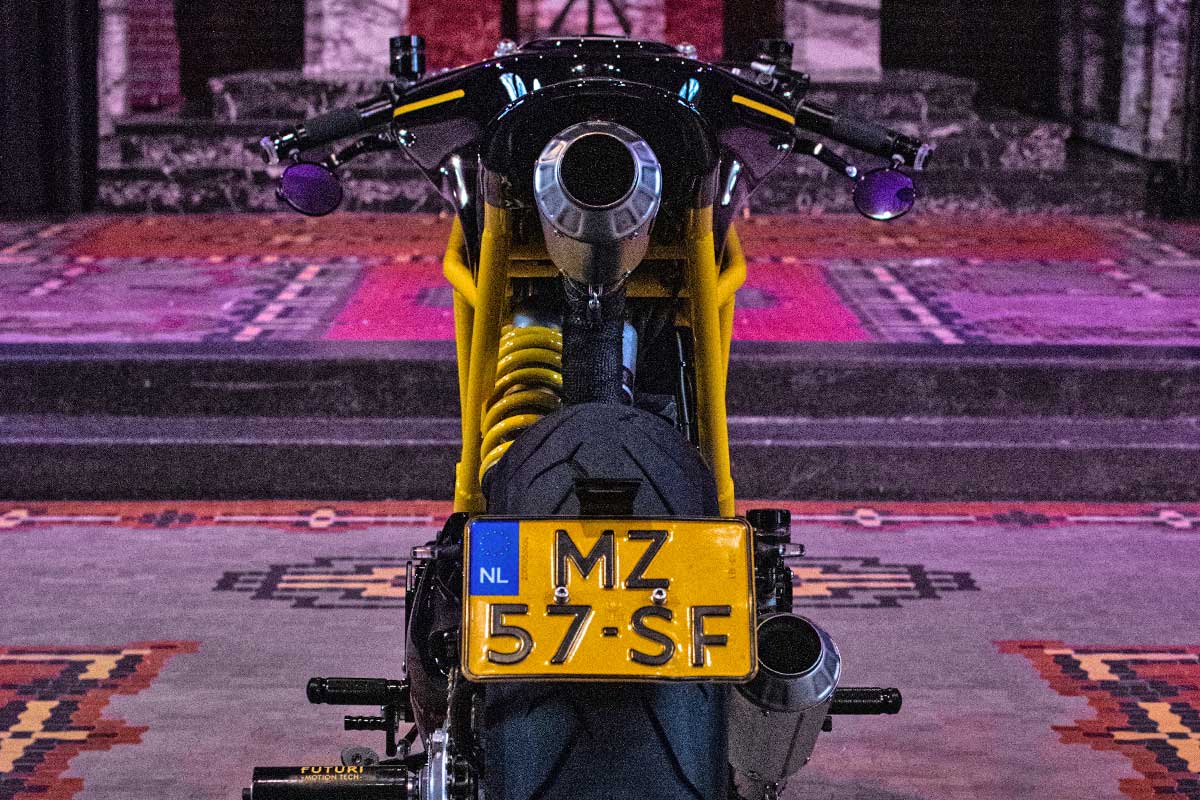

“The Futuri Ducati 900SS cafe racer, excluding all my research time, cost me around 650 hours and took me about 14 months to complete. It performs way better than before in terms of handling and engine characteristics. I don’t like the superbike/supersport style tuned engines. I like short gear changes and hard pulling engines. I dropped the front sprocket from a 15 to a 14 tooth. Decreasing top speed and increasing torque by around 8%. The wheelbase is also 2cm longer with the new swingarm. It turns sharp as hell, pulls hard and I won’t even mention the incredible sound it makes. A Biggelaar Special Performance quiet clutch mod decreases the bikes stuttering behaviour at low RPMs and reduces engine/clutch wear. The engine makes 78hp at the back wheel. It could make around 80hp with larger pod filters but I didn’t want to compromise the look I was after.
The best part about this whole project was a beautiful compliment I received from my Dad. He said, ‘You have surpassed me in the stuff you are doing now’.”
